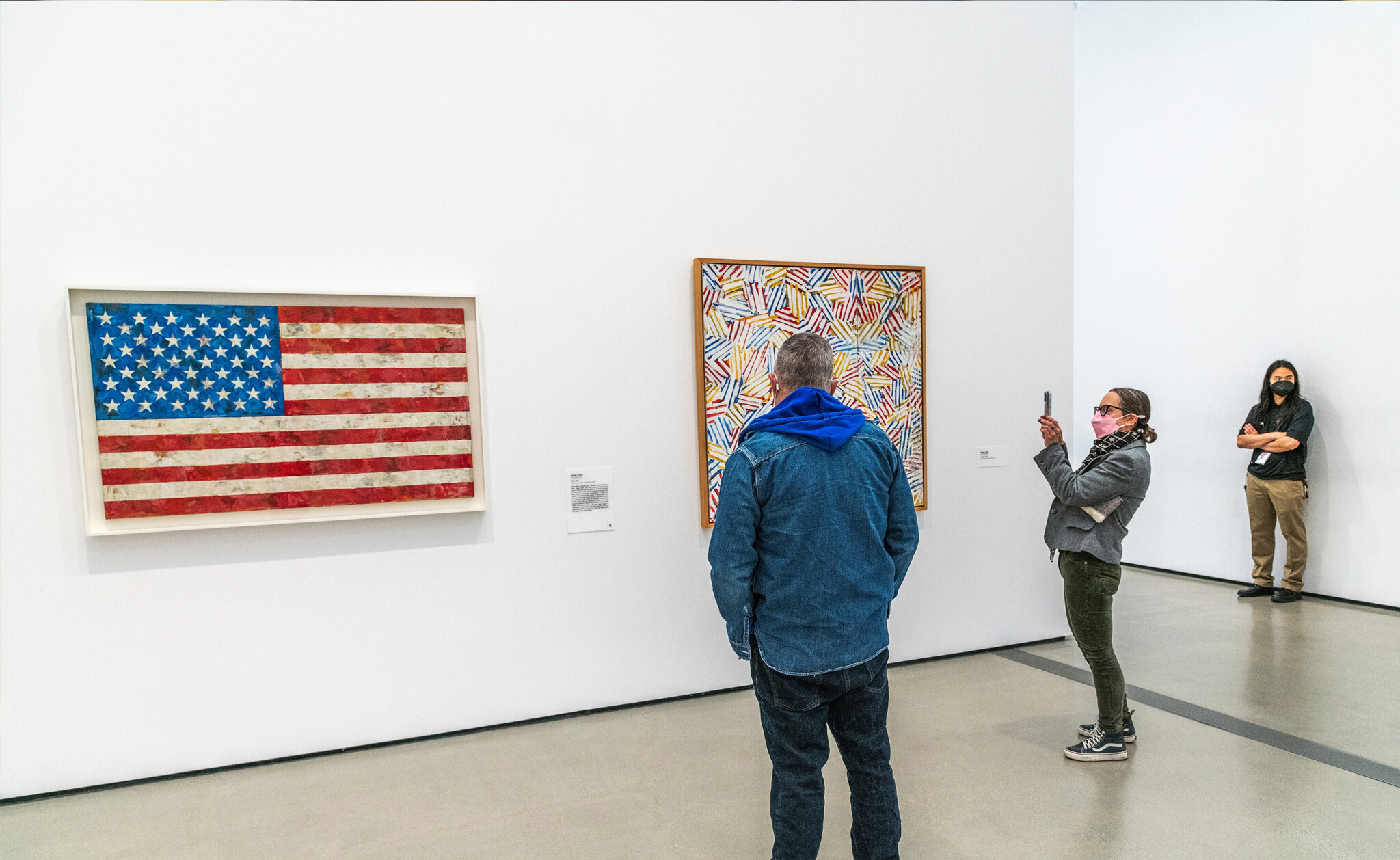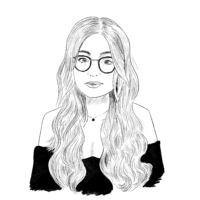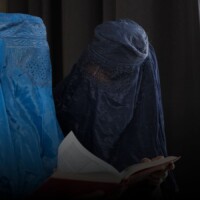Reactions in the art world to the American Presidential Election evidence an alarming disconnect with the public they claim to represent.
In the immediate aftermath of the election results, The Art Newspaper (TAN) published an indictment of Trump. A “stunning sweep”, the article explains how Trump “will become the first convicted felon to hold the office, the oldest person to be elected president and the second-ever president to serve non-consecutive terms”. The author of the article, self-proclaimed “Arty farty writer type” Helen Stoilas, characterizes the response from the art world as “somber, angry and distressed about the future of US culture” and “a sharp contrast to the hope seen early on election night at Gladstone Gallery in Chelsea [New York], where crowds of Harris supporters gathered at a marathon evening of readings staged in the installation The Shape of Things by Carrie Mae Weems. Although New York predictably remains blue, even in this stronghold, votes for the Democratic party have fallen to their lowest since 1992. The politics of the subway are not the same as those behind gallery glass.
Stoilas was unabashedly active in pushing the Democrat line for TAN. She published an article about Carrie Mae Weems, and then another declaring “Artists and collectors rush to support Kamala Harris campaign”. In the election aftermath, Stoilas was left dumbfounded, along with many other members of the chattering art world. It is unimaginable to them how the electorate could support Trump’s pledges “to enact mass deportations of undocumented immigrants, to defund schools that teach critical race theory and transgender rights, to roll back incentives for electric vehicles and expand fossil fuel exploration, to impose 60% tariffs on goods and materials imported from China and to take revenge on his enemies”. Artist Tanya Selvaratnam warns about consequences of the Trump administration for the art world, cautioning that “A lot of damage can be done”. Whilst the details of her hypothesis are nonexistent, she rouses restrictions on freedom of expression as a threatening specter.
Enjoy independent, ad-free journalism - delivered to your inbox each week
Trump’s election is perceived as societal Armageddon in many corners of the art world. For millions who voted and many millions more around the world, the results are not a surprise. Konstantin Kisin provides ten reasons for why Europeans shouldn’t be “shocked” or “surprised” about the outcome. The final reason is most pertinent: “America is a country whose founding story is one of resistance to government overreach. They loathe unnecessary restrictions, regulations and control.”
Left-leaning people in the art world misinterpret the link between government overreach and freedom of expression. If the horrors of the twentieth century taught us anything, it is that “big states” do not necessarily protect artistic agency. Many artists – visual, musical, or otherwise – did not fare well in Hitler’s Germany, Mao’s China, or Stalin’s Russia. Some had their creative practices stopped altogether. Millions were killed.
And so, the repeated “concern” of the art world that freedom of expression will be jeopardized by Trump’s presidency is difficult to understand. The Californian artists Lyndon Barrois and Lita Albuquerque hope that “the worlds of arts and culture can continue to tell stories of truth without censorship or alternative truths and cultures” and “worry about our freedom to express ourselves”. But are these worries founded?
Recent examples of artistic “censorship” – a term that requires constant contextualization in each instantiation – can be found here. I will provide a further example. In March 2023, the work of three artists who took abortion as their subject matter were removed from an exhibition at Lewis-Clark State College in Idaho. The state was not objecting to the artistic agency of its people to create such works. Rather, the display of these works in this particular public-funded exhibition was in contravention of laws that prohibit the use of state funds to “counsel in favor of abortion” or “promote abortion”. In this instance, and other American examples above, the “right” to produce subjectively political or obscene art is not hindered. Whether such art is paid for by the fellow taxpayer, or shown to children without parental consent, however, are fundamental matters for public debate.
Public institutions are, in theory, democratic, and should aim to represent their majority audience – not the political impulses of individual artists, gatekeepers, or staff. In 2022, the Director of the Whitworth Gallery in Manchester, UK, was removed after he staged an exhibition of solidarity with Palestine’s “liberation struggle”. Members of the local Jewish community complained about the gallery’s meddling with public equalities: “public” art galleries hold responsibilities for the people they claim to represent.
There is a pervasive arrogance among artists who believe in their “right” to funding. Appeals to the Arts Council in the UK exemplify this. The moment funding is denied, for whatever reason, motivates many applicants to claim that their own opinions are being censored in the face of an authoritarian, oppressive government elite.

Inability to exhibit with public funding should be encouragement to seek funding elsewhere. If a work of art is truly worth funding, then someone will believe in it by committing a checkbook. In Britain, private funders such as Jonathan Ruffer funnel money into art projects. One of them, live-action performance Kynren, is a large-scale patriotic retelling of English history, and one unimaginable to a left-wing funding body. In America, such examples are even more rife, given its philanthropic culture.
Libertarian policies towards arts funding cultivate private philanthropy, in contrast to socialist oppression which seeks to regulate the arts. This is not an opinion but a fact. As Kisin explains, America is a country built on the opposition of governmental overreach. As soon as public art institutions spend taxpayers’ money to support partisan views, they become political and undemocratic. Reduced funding in the arts – one policy that the article threatens – would open new avenues for artistic expression, unrestricted by funding stipulations.
Artistic reactions to Margaret Thatcher’s conservative governance in Britain (1979-1990) provide comparative examples. She entered office and reduced Arts Council funding. But, by doing so, a period of artistic protest began – artists produced art to criticize Thatcher, many of whom profited from doing so, and are widely remembered today. Jeremy Deller’s The Battle of Orgreave (An Injury to One is an Injury to All) (2001) attracted acclaim in the art world through the manner in which it “confronts” a violent conflict during the miners’ strike of 1984-85. Deller was commissioned to produce The Battle of Orgreave by Artangel, evidencing the ability of private funders to engender free expression, in contrast to idly relying on government funding. Deller, along with other reactants to Thatcher’s government, were not censored but allowed to criticize, especially during periods of conservative government.
Modern art can be confusing. In contrast, Trump’s small-state intentions are incredibly clear: “Promises made, promises kept”. In diametric opposition to pervasive mainstream reporting, conservative artists continue to be the most silent voices in the contemporary art world, currently an island unto its own. The authoritarian impulse of those who protest the Trump presidency in The Art Newspaper reveals that they know this to be the case and strive to preserve the status quo.




Comments (0)
Only supporting or founding members can comment on our articles.